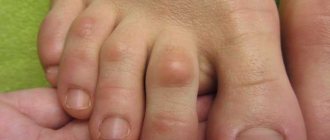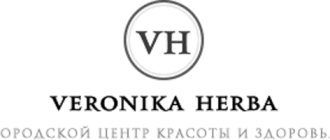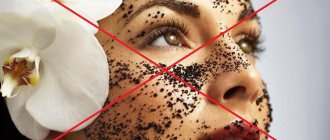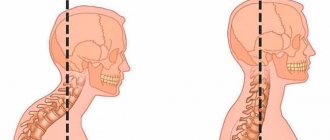When is electrophoresis used in children:
Medicinal electrophoresis is widely used in pediatrics, as it allows one to avoid injections that frighten children, and allows one to reduce the concentrations and doses of drugs, reducing their side effects and preventing allergic reactions. The medicinal effect is “targeted”, because the drug is injected into the skin exactly in the affected area. At the same time, a so-called “depot” of the drug is created in the skin, which makes the effect more long-lasting. Electrophoresis is used in all medical fields, from surgery (for example, cleaning infected wounds with electrophoresis with enzymes), to cosmetology, dermatology and dentistry. In children, it is actively used in the treatment of neurological diseases, in the treatment of bone fractures, and in bronchopulmonary diseases.
Electrophoresis for the face in cosmetology
Electrophoresis for the face is used both in medicine and in cosmetology. The procedure has a number of advantages and is used as:
- simple facial care to reduce redness, rosacea, rosacea;
- prevention of inflammation - pimples, acne, peeling;
- removal of pigment spots.
The skin becomes firm, soft, elastic and healthy, and its former firmness returns.
Before and after
A little physics: what is the mechanism of action of electrophoresis
The administration of medicinal substances is based on the properties of equally charged particles to repel, and oppositely charged particles to attract. During electrophoresis, a drug is placed under the active electrode, the active ions of which have the same charge as the electrode: negatively charged substances are placed under the cathode with a negative charge, and positively charged substances are placed under the anode with a positive charge. Ions of all metals and most alkaloids are introduced from the positive electrode, and acid radicals and metalloids are introduced from the cathode with a negative charge.
The injected ions enter the skin to a depth of 1 mm, mainly through pores, sweat glands and hair follicles. Further migration of the substance into deeper tissues is achieved through diffusion.
Medicinal substances are retained in the skin for up to 3 weeks, reducing the need for large doses of active substances. For local effects, 5–10% solutions of substances are used, and for segmental reflex effects, 1–2% solutions are used. All solutions of medicinal substances are prepared using distilled water to avoid the formation of unwanted active ions. The current strength is usually limited to 5 mA in children and up to 12 mA in adults.
An important advantage of administering drugs using electrophoresis is the activation of active substances due to dissociation into active ions. Drug electrophoresis allows you to create a high concentration of the active substance directly in those areas of tissue where treatment is necessary. At the same time, due to the targeted action and low concentrations, the overall effect of the drug is reduced, which makes it possible to prevent many side effects, including common allergic reactions.
Preparation
Before the session begins, the patient needs to be familiarized with the sensations that may arise during the procedure. In addition to a slight tingling sensation on the face, there may also be a noticeable metallic taste in the mouth. Therefore, the cosmetologist must select a current strength at which you will not feel any discomfort.
The skin in different areas has different sensitivity. Thus, the skin around the nose and eyelids is most sensitive. If the unpleasant sensations develop into painful ones, you need to tell a specialist about this, who will reduce the current strength.
The cosmetic substance is delivered to the tissue area through the sebaceous and sweat glands. A small part of the drug may enter organs located near the site where electrophoresis is performed. But a large concentration of the substance remains on the problem area of the skin.
+
Duration of electrophoresis procedures
The amount of ions introduced into the body is determined by the strength of the current, the area of the active electrode and the duration of the procedure. In children, depending on age, it can reach 20 minutes. In pediatrics, it is always preferable to increase the procedure time instead of increasing the current intensity to avoid discomfort in children. In any case, a slight reddening of the skin will be noted under the electrodes - due to local expansion of microvessels from irritation by acidic and alkaline electrolysis products.
Advantages and disadvantages
Advantages:
- Removes pain syndrome;
- Relieves swelling;
- Has a sedative effect;
- Promotes vasodilation and relieves inflammatory processes;
- Able to establish normal metabolism in tissues, which allows medications to be better absorbed;
- Helps biologically active substances penetrate the blood.
There are also some disadvantages of this technique. This happens in rare cases, but mild burns are possible. The fact is that as a result of the action of electric current, hyperthermia can be observed at the places where the electrodes come into contact with the skin. To avoid such problems, a special gasket is placed between the plates and the skin.
Electrophoresis is used for the following diseases:
- Nervous diseases: perinatal pathology of the central nervous system, hypertension syndrome in children, muscular dystonia syndrome, neuritis, neuralgia, migraines, sleep disorders, enuresis in children
- ENT diseases: sinusitis, tonsillitis, sinusitis, otitis
- In the treatment of ARI - pharyngitis, tracheitis, pneumonia
- Vision pathology – for the correction of myopia, astigmatism, farsightedness
- For kidney pathology: for the treatment of pyelonephritis, cystitis.
- Diseases of the digestive system: stomach and duodenal ulcers, colitis, gastritis, cholecystitis
- Pulmonary diseases: chronic and acute bronchitis, bronchial asthma, pneumonia
- Surgical diseases: recovery in the postoperative period, treatment of scars
- Dermatology: atopic dermatitis, acne scars, seborrhea, rosacea
Contraindications to ion therapy
Electrophoresis has contraindications. Before you begin the procedures, you need to familiarize yourself with them. These include:
- pustular infections on the skin;
- malignant neoplasms;
- kidney disease;
- bronchial asthma;
- inflammatory processes in the acute stage;
- allergy to the drug that must be administered during electrophoresis;
- blood clotting disorder;
- intolerance of the body to electric current;
- heart or kidney failure, etc.
How does the medicinal electrophoresis procedure work:
The medicinal electrophoresis procedure is performed in a physiotherapy office or, if necessary, in any medical office and even at home. It is important to carry out procedures on intact skin.
Electrodes with electrode pads soaked in water and a medicinal solution are placed on the surface of the skin. Dry electrodes must not be used. Electrodes with pads must fit tightly to the skin, otherwise uneven distribution of current can lead to skin irritation. Electrodes with medicine or drugs are applied to areas of the body that require therapeutic effects.
Before the procedure, the child is explained that he must immediately inform the doctor of any unpleasant sensations. A slight tingling or tingling sensation is considered normal during the electrophoresis procedure.
Then turn on the device and slowly increase the current. A typical electrophoresis procedure takes 10 to 20 minutes, depending on the age of the child. After the procedure, the physiotherapist turns off the device and removes the electrodes. Redness of the skin under the electrodes is considered a normal reaction to the procedure.
Ion therapy is effective in treating a number of diseases:
Muscle hypertonicity in newborns . When performing electrophoresis, aminophylline is used. This drug increases blood circulation and promotes the growth of cartilage tissue.
Bronchitis . In case of illness, a procedure with calcium is prescribed. If there is a large amount of sputum, the patient is injected with calcium chloride using a current, and if there is a dry cough, calcium iodide is administered. Electrophoresis supplies the localized site of the disease with a drug that effectively fights the inflammatory process.
Pathologies of the joints and spine: arthrosis and osteochondrosis . The procedure is carried out using an anesthetic - novocaine. During the procedure, the main manipulations occur in the area where severe pain is localized. A gasket soaked in a 0.5% solution of novocaine hydrochloride is placed between the anode and the patient’s body. The standard course of treatment is at least 10 procedures. In case of severe pain, electrophoresis is prescribed 2 times a day for 15-25 minutes.
Skin diseases : melanoma, acne or furunculosis. In these cases, copper is used as a drug, as it has an anti-inflammatory and antitumor effect.
Keloid scars . Only scars at an early stage are treated with electrotherapy. To combat them, procedures with lidase are used. Sometimes this treatment is supplemented with electrophoresis with collagenase, since only with an integrated approach can the scar be reduced in volume or stop its growth.
Gynecological diseases associated with unsuccessful pregnancy. Treatments with zinc are prescribed. They are contraindicated on certain days of the monthly cycle, so they are not recommended without the approval of a gynecologist.
Intervertebral disc herniation . The disease is effectively treated with ionotherapy with Karipazim. This drug softens the hernia, so its effect on the nerve ending weakens and the pain goes away. The procedure will require two pads. Karipazim is applied to the first one and is connected to the positive pole of the device, and a heated 0.9% sodium chloride solution is applied to the second (it is connected to the negative pole of the equipment). The affected joint of the spine should be placed between the pads and current should be passed through it. Treatment of a herniated disc with electrophoresis is a long process. It will take 2-3 courses of 20-30 procedures every 1-2 months.
Increased uterine tone during pregnancy . The procedure is harmless for both the expectant mother and the baby. But if fears still creep in, then it is better to abandon electrophoresis during pregnancy and breastfeeding.
Pathologies of cardiovascular diseases . Calcium electrophoresis is performed.
With the help of electrophoresis, pathologies of the nervous, digestive, and genitourinary systems, sleep disorders, neuroses, migraines, burns, and a number of other diseases can be cured. Sometimes one drug is not enough to completely improve the patient.
Ion therapy cannot be used as an isolated method in the treatment of pathological processes in the body. It can be used as additional therapeutic procedures, for example: along with taking antibiotics. The dosage of drugs may vary. Children and the elderly are prescribed a reduced dose, which is one third lower than for the average person. Electrophoresis sessions should be carried out daily, perhaps every other day. The course of electrotherapy ranges from 10 to 30 procedures.
Despite the fact that there is no harm from electrophoresis, you should not self-medicate either. First you need to consult a doctor, namely, he should prescribe a drug or a set of drugs for electrophoresis.
Features of physiotherapeutic treatment of sexually transmitted infections
Treatment of diseases occurs due to the influence of physical factors:
- heat;
- cold;
- electromagnetic or laser irradiation;
- direct or alternating electric current;
- mechanical impact.
Physiotherapeutic treatments for sexually transmitted infections that have already proven effective:
- cryotherapy;
- laser radiation;
- radio wave radiation, for example, from the Surgitron apparatus;
- exposure to electric current (electrical stimulation).
The specialists of the URO-PRO clinic have extensive experience in treating diseases using physiotherapy; you can make an appointment with us for a consultation right now by filling out the online form on the website. Do not delay treatment; timely diagnosis will help avoid the development of more serious diseases.
Drugs
The means used for iontophoresis consist of elements that disintegrate into ions in the created field of electricity. The packaging of such drugs must have a special marking - either a “minus” or “plus” sign. It indicates which pole to administer the product from. An iontophoresis apparatus has an anode and a cathode.
An anode is needed to introduce alkaloids or metals that strengthen the skin, enhance microcirculation and relax muscles. For a positively charged electrode, vitamins, a well-known and inexpensive saline solution, copper and zinc sulfates, hyaluronidase, aloe extract and other drugs are used.
The cathode is used to introduce acids and metalloids. It is intended to affect aging or oily skin. Softens, improves blood flow, activates nerve endings. This negative electrode uses hyaluronic acid, caffeine, sodium salicylate, nicotinic and ascorbic acids, water-soluble hydrocortisone, etc. All of these drugs can be used if you do iontophoresis at home.
In the salon, a specialist can select cocktails for the procedure, consisting of several substances at once.
Are there any side effects?
Electrophoresis has no side effects. The main thing is to contact an experienced, qualified doctor who, when prescribing the procedure, will take into account all contraindications and select the correct drug and method of treatment.
Sometimes after therapy there is a slight increase in temperature, slight burning or swelling in the area of treatment. But all these manifestations go away on their own within an hour and do not require additional medical intervention.
Otherwise, electrophoresis is absolutely safe. An additional argument in its favor can be the fact that this method of physiotherapy is often recommended for children and pregnant women.
Galvanization
Galvanization is a technique of electrotherapy, during which the patient’s body is exposed to a constant low-voltage electric current. Galvanization is applied locally to affected areas and reflex segmental areas, and there is also a method of general galvanization.
Dermatologists traditionally use several galvanization methods:
- local - to foci of inflammation;
- intranasal;
- general according to Vermeule;
- galvanization of the collar zone according to Shcherbak;
- four-chamber galvanic bath;
Indications
Galvanization is indicated for patients with:
- neurodermatitis;
- other itchy dermatoses;
- scleroderma or nodular vasculitis;
- psoriasis or lichen planus;
- keloid scars.
Contraindications
Galvanization is not recommended for:
- eczema, dermatitis and pyodermitis;
- stage 3 hypertension;
- feverish condition;
- oncological diseases.








